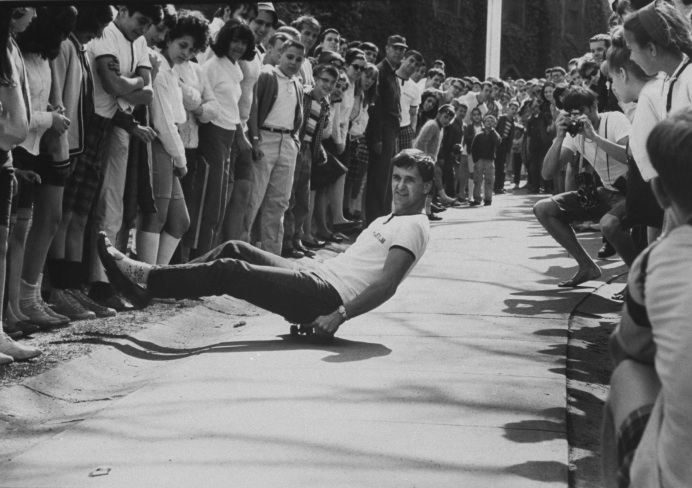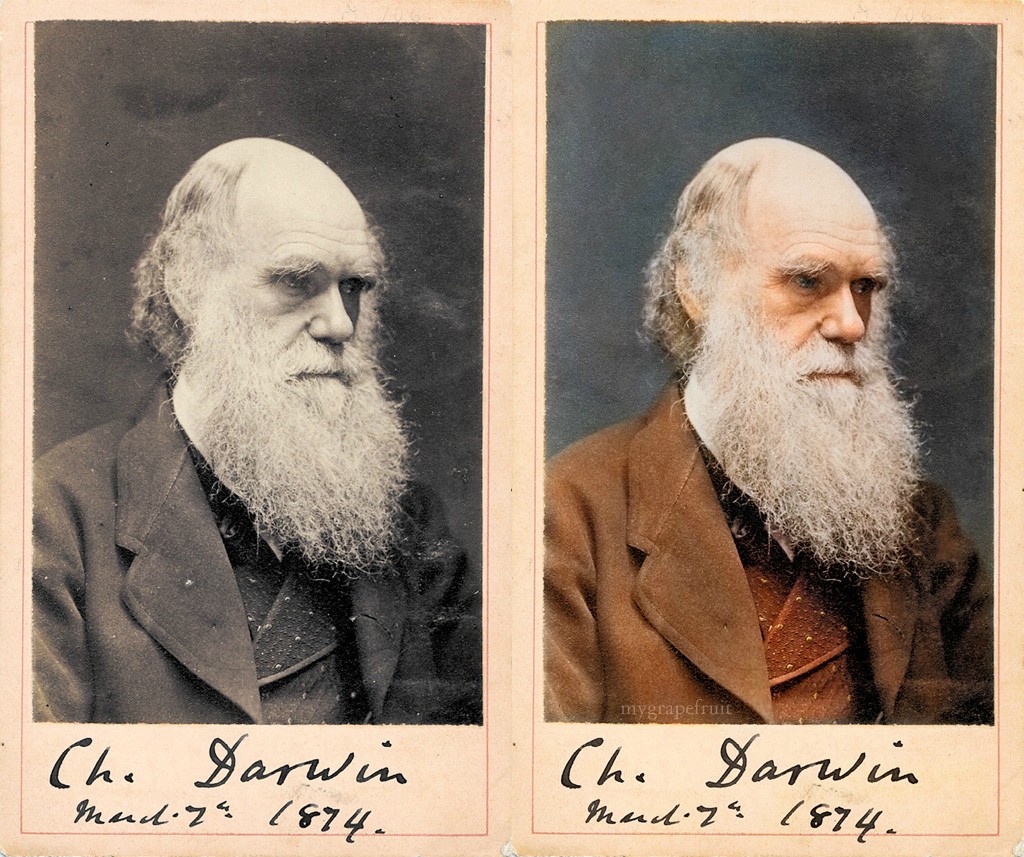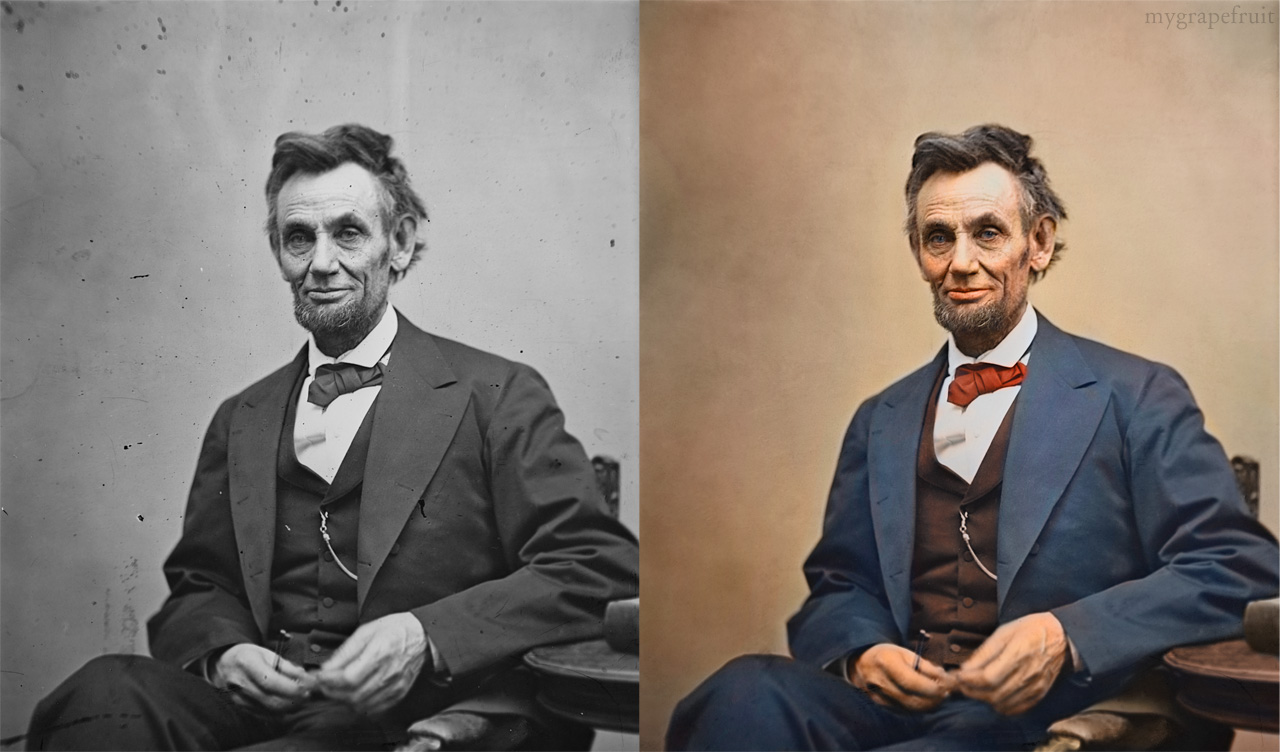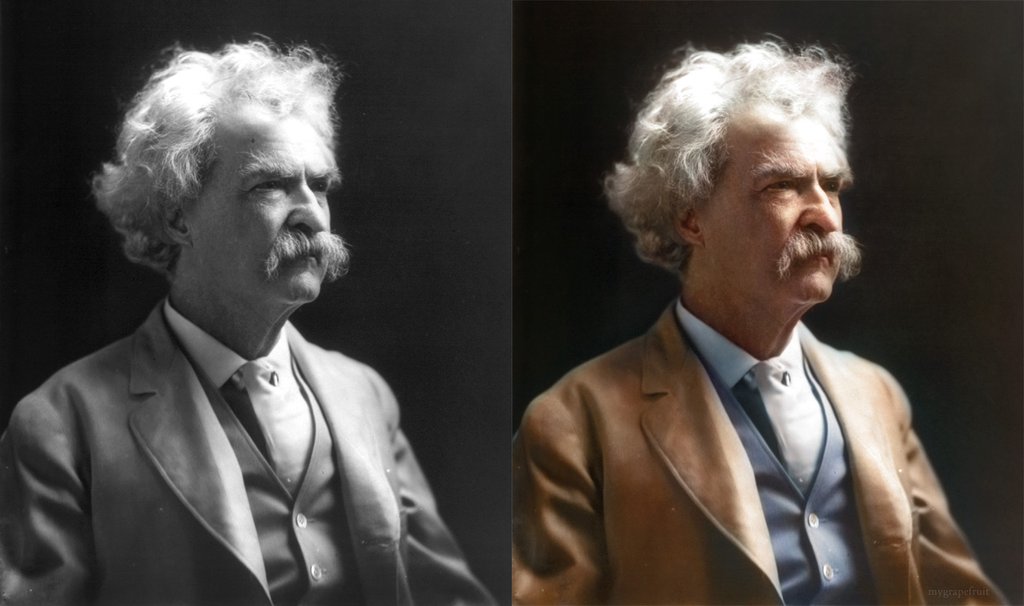[youtube=http://www.youtube.com/watch?v=cZcPREQY_mg&w=700] My friend Felix turned me on to her - you should follow his blog, he finds good stuff.
You've got your thick-rimmed glasses, your manga books, your expensive jeans and a couple of t-shirts made of really really nice cotton, but do you have a farting scroll?

The database for Japanese and Chinese classics at Waseda University Library has digitised a rare scroll showing a he-gassen (屁合戦), or 'farting competition' (see it here in full).
Apparently, similar drawings were used to ridicule westerners towards the end of the Edo period, with images depicting the westerners blown away by Japanese farts.
Personally, I happen to know first hand that English ones are bad enough, so I'm not sure the Japanese guffs would have worked. My friend Max's divine wind would have made short work of them.
I also once read a book about a dude who travelled the world learning weird local martial arts (pressure points, wrestling, iron jacket, all that stuff), and the weirdest of all was a guy who had deliberately developed halitosis so bad he could knock you out by burping in your face.
Continuing the slightly angsty live music theme...(really lovely stuff this) [youtube=http://youtu.be/A9Tp5fl18Ho&w=700]
4AD and Jagjaguwar have collaborated on a live session that captures a truly unique Bon Iver performance, featuring Justin Vernon and Sean Carey. On recent tours fans will have become accustomed to seeing Vernon flanked by an eleven-piece band, with the swell in numbers lending a grandiose element to even his most delicate songs. Sidestepping expectations, the idea Vernon presented for this session was to provide a wildly different experience.
Recorded in AIR Studio's Lyndurst Hall - a building that was originally a church and missionary school designed in 1880 by the great Victorian architect Alfred Waterhouse (designer of the Natural History Museum) - Vernon was joined only by Carey, with the pair positioning themselves opposite one another at two grand pianos. Although neither Justin nor Sean's first instrument is piano, they were able to remodel the songs in a way that showcases their complimentary vocals and, perhaps more strikingly, a seemingly effortless ability to experiment with form and structure.
As such, fans are treated to jaw-dropping interpretations of several songs from both the new album and the 'Blood Bank' EP, as well as a cover of Bonnie Raitt's "I Can't Make You Love Me". And interpretation is an apt word, as these songs are artfully abstracted from their original incarnations. Rather than layer the sound as on 'Bon Iver, Bon Iver', the focus is on paring back, in part evoking the minimalist approach of contemporary classical music, while remaining true enough to the source material to retain those elements characteristic of Bon Iver.
As on "Babys" and "Hinnom, TX", Vernon's trademark falsetto is positioned centre stage, framed by subtle and unexpected instrumental flourishes that render the performance simultaneously weighty and airless. It's quite an achievement that songs so widely-known and loved in their recorded form are able gain in emotional impact, and stands as testament to Bon Iver's singular talent.
1. Hinnom, TX 2. Wash. 3. I Can't Make You Love Me 4. Babys 5. Beth/Rest
Director: Iain Forsyth & Jane Pollard Recording & Mixing: Jake Jackson with Brian Joseph Recorded in London at AIR Studios, October 16, 2011
"Hinnom, TX", "Wash.", "Beth/Rest" (c) 2011 April Base Publishing (ASCAP) "Babys" (c) 2009 April Base Publishing (ASCAP) "I Cant' Make You Love Me" (c) 1991 BMG Songs, Almo Music Corp., Bird Blues Music, Hayes Street Music (ASCAP)
[youtube=http://www.youtube.com/watch?v=MKKvl9ANP7U&w=700]
'Attention please! Attention please! Don't dare to talk! Don't dare to sneeze! Don't doze or daydream! Stay awake! Your health, your very life's at stake! Ho-ho, you say, they can't mean me. Ha-ha, we answer, wait and see.
Did any of you ever meet A child called Goldie Pinklesweet? Who on her seventh birthday went To stay with Granny down in Kent. At lunchtime on the second day Of dearest little Goldie's stay, Granny announced, 'I'm going down To do some shopping in the town.' (D'you know why Granny didn't tell The child to come along as well? She's going to the nearest inn To buy herself a double gin.)
So out she creeps. She shuts the door. And Goldie, after making sure That she is really by herself, Goes quickly to the medicine shelf, And there, her little greedy eyes See pills of every shape and size, Such fascinating colours too -- Some green, some pink, some brown, some blue. 'All right,' she says, 'let's try the brown,' She takes one pill and gulps it down. 'Yum-yum!' she cries. 'Hooray! What fun! They're chocolate-coated, every one!' She gobbles five, she gobbles ten, She stops her gobbling only when The last pill's gone. There are no more. Slowly she rises from the floor. She stops. She hiccups. Dear, oh dear, She starts to feel a trifle queer.
You see, how could young Goldie know, For nobody had told her so, That Grandmama, her old relation Suffered from frightful constipation. This meant that every night she'd give Herself a powerful laxative, And all the medicines that she'd bought Were naturally of this sort. The pink and red and blue and green Were all extremely strong and mean. But far more fierce and meaner still, Was Granny's little chocolate pill. Its blast effect was quite uncanny. It used to shake up even Granny. In point of fact she did not dare To use them more than twice a year. So can you wonder little Goldie Began to feel a wee bit moldy?
Inside her tummy, something stirred. A funny gurgling sound was heard, And then, oh dear, from deep within, The ghastly rumbling sounds begin! They rumbilate and roar and boom! They bounce and echo round the room! The floorboards shake and from the wall Some bits of paint and plaster fall. Explosions, whistles, awful bangs Were followed by the loudest clangs. (A man next door was heard to say, 'A thunderstorm is on the way.') But on and on the rumbling goes. A window cracks, a lamp-bulb blows. Young Goldie clutched herself and cried, 'There's something wrong with my inside!' This was, we very greatly fear, The understatement of the year. For wouldn't any child feel crummy, With loud explosions in her tummy?
Granny, at half past two, came in, Weaving a little from the gin, But even so she quickly saw The empty bottle on the floor. 'My precious laxatives!' she cried. 'I don't feel well,' the girl replied. Angrily Grandma shook her head. 'I'm really not surprised,' she said. 'Why can't you leave my pills alone?' With that, she grabbed the telephone And shouted, 'Listen, send us quick An ambulance! A child is sick! It's number fifty, Fontwell Road! Come fast! I think she might explode!'
We're sure you do not wish to hear About the hospital and where They did a lot of horrid things With stomach-pumps and rubber rings. Let's answer what you want to know; Did Goldie live or did she go? The doctors gathered round her bed, 'There's really not much hope,' they said. 'She's going, going, gone!' they cried. 'She's had her chips! She's dead! She's died!' 'I'm not so sure,' the child replied. And all at once she opened wide Her great big bluish eyes and sighed, And gave the anxious docs a wink, And said, 'I'll be okay, I think.'
So Goldie lived and back she went At first to Granny's place in Kent. Her father came the second day And fetched her in a Chevrolet, And drove her to their home in Dover. But Goldie's troubles were not over. You see, if someone takes enough Of any highly dangerous stuff, One will invariably find Some traces of it left behind. It pains us greatly to relate That Goldie suffered from this fate. She'd taken such a massive fill Of this unpleasant kind of pill, It got into her blood and bones, It messed up all her chromosomes, It made her constantly upset, And she could never really get The beastly stuff to go away. And so the girl was forced to stay For seven hours every day Within the everlasting gloom Of what we call The Ladies Room. And after all, the W.C. Is not the gayest place to be. So now, before it is too late. Take heed of Goldie's dreadful fate. And seriously, all jokes apart, Do promise us across your heart That you will never help yourself To medicine from the medicine shelf.'
Roald Dahl
Not really sure how to arrange my face for this. Original link is HERE. Ummm...enjoy? [slideshow]
 A competitor at the first intercollegiate skateboarding championships at Wesleyan sits down on his board while he rides past spectators in this photograph from 1965 (photo - Bill Eppridge—Time & Life Pictures/Getty Images). Click here for the full slideshow.
A competitor at the first intercollegiate skateboarding championships at Wesleyan sits down on his board while he rides past spectators in this photograph from 1965 (photo - Bill Eppridge—Time & Life Pictures/Getty Images). Click here for the full slideshow.
[youtube=http://www.youtube.com/watch?v=amsBFLS0qqo&w=692]
(my kind of advert - though it is for an Egyptian cheese) [youtube=http://www.youtube.com/watch?v=liFPAxeRFjA&w=700]
[youtube=http://www.youtube.com/watch?v=u2VVshyrzwA&w=700] You've probably known all about him for ages, but Devendra Banhart is new to me. Love his sound, little bit bonkers, little bit Latin, little bit happy, little bit sad. I quite like his website, even though it's a little bit crap.
 (best viewed large)
(best viewed large)
The Raft of the Medusa (Le Radeau de la Méduse) is an early 19th century oil by French Romantic painter Théodore Géricault (1791–1824), and an icon of French Romanticism. At a whopping 5 x 7 metres, it shows the horrifying aftermath of the wreck of the French naval frigate Méduse, which ran aground off the coast of Mauritania on July 5, 1816.
At least 147 people were set adrift on a hurriedly constructed raft; all but 15 died in the 13 days before their rescue, and those who survived endured starvation, dehydration, cannibalism and madness. The event became an international scandal, in part because its cause was widely attributed to the incompetence of the French captain perceived to be acting under the authority of the recently restored French monarchy.
In choosing the tragedy as subject matter for his first major work, Géricault consciously selected a well-known incident that would generate great public interest and help launch his career (something modern artists aren't exactly strangers to - a bit like painting the Twin Towers today). The event fascinated the young artist, and before he began work on the final painting, he undertook extensive research and produced many preparatory sketches. He interviewed two of the survivors, and constructed a detailed scale model of the raft.
His efforts took him to morgues and hospitals where he could view, first-hand, the colour and texture of the flesh of the dying and dead. As the artist had anticipated, the painting proved highly controversial at its first appearance in the 1819 Paris Salon, attracting passionate praise and condemnation in equal measure. However, it established his international reputation, and today is widely seen as seminal in the early history of the Romantic movement in French painting.
Rack up the quality setting, crank the volume and lie on the sofa.
[youtube=http://www.youtube.com/watch?v=dSPfp4VMkpY&w=700]
"It has been said that my Requiem does not express the fear of death and someone has called it a lullaby of death. But it is thus that I see death: as a happy deliverance, an aspiration towards happiness above, rather than as a painful experience. The music of Gounod has been criticized for its overinclination towards human tenderness. But his nature predisposed him to feel this way: religious emotion took this form inside him. Is it not necessary to accept the artist's nature? As to my Requiem, perhaps I have also instinctively sought to escape from what is thought right and proper, after all the years of accompanying burial services on the organ! I know it all by heart. I wanted to write something different."
 Notes edited from here: Fauré began sketches for the Requiem in 1887. Unlike many composers, he was not drawn to compose a Requiem because of the death of a loved one. Rather than offer visions of the terrors to come, Fauré said that he saw death "as a happy deliverance, an aspiration towards the happiness of the hereafter, rather than as a painful passing away." For this reason, Fauré's setting is remarkably subdued, omits entirely the Sequenz segment, with its visions of wrath and hellfire, and adds the Pie Jesu and In Paradisum texts, which are not part of the Requiem proper but emphasise the granting of eternal rest.
Notes edited from here: Fauré began sketches for the Requiem in 1887. Unlike many composers, he was not drawn to compose a Requiem because of the death of a loved one. Rather than offer visions of the terrors to come, Fauré said that he saw death "as a happy deliverance, an aspiration towards the happiness of the hereafter, rather than as a painful passing away." For this reason, Fauré's setting is remarkably subdued, omits entirely the Sequenz segment, with its visions of wrath and hellfire, and adds the Pie Jesu and In Paradisum texts, which are not part of the Requiem proper but emphasise the granting of eternal rest.
By the time of the first performance, on January 16 1888, there were five movements: an Introit and Kyrie, the Sanctus, Pie Jesu, Agnus Dei, and In Paradisum. To perform the work, Fauré called for a mixed choir with divided tenors and basses, a soprano soloist, an orchestra of low strings (violas, cellos, and double basses), harp, timpani, and organ, with a violin solo in the Sanctus. He added an Offertoire in 1889, and added a setting of the Libera Me that he had written for baritone and organ some twelve years earlier. He added horns, trumpets, and trombones to the orchestra, and a baritone soloist, and this version was first performed at the Madeleine in January of 1893.
Fauré's publisher wanted a larger-scale work, though, leading to a final revision premiered in July 1900 at the Trocadéro in Paris.
As a choirmaster and organist, Fauré constantly sought to create a new kind of church music. He wanted something different than the operatic bel canto style which was popular in Paris at the time, and different than the outsized, large-scale Germanic Romantic style which dominated the rest of Europe. Along the way, he helped to establish a distinctive French style which set the stage for the development of the Impressionist style of Debussy and Ravel.
For example, the composers of the day tended to write for progressively bigger and bigger orchestras, with thicker, more complicated textures, and phrases which stuck slavishly to the divisions of the bar line. Fauré, on the other hand, opted for smaller ensembles and spare orchestrations, omitting violins and winds in the Requiem, for instance, when he felt they were unnecessary.
Fauré also thought on a smaller, more intimate scale than many of his contemporaries. There are none of the larger-than-life, outsized statements of a Wagner or a Berlioz here; the entire Requiem has some 30 bars of fortissimo singing, and most of it doesn't rise above mezzoforte. Instead, Fauré uses subtle gradations in dynamic, color, and harmony to achieve the effects that he wants. And in the Requiem, these gradations often follow the central points of emphasis in the text.
In some ways, though, Fauré's style involves some paradox. One example is the curious relationship between freedom and control. In his piano music, his chamber compositions, his songs, and his vocal works, phrases emerge that are freed from the tyranny of the strong-weak-strong-weak four-beat bar line. For the Requiem, he draws melodic inspiration from the tunes and rhythms of Gregorian chant, which thought in similarly long phrases. But Fauré was quite explicit about how to go about achieving this freedom. He knew exactly what he wanted, and is scrupulously precise in his directions on rhythm, dynamics, and phrase length. As a result, even more than in other composers, it is essential in singing Fauré to pay strict attention to every marking in the text. Often, Fauré's effects depend on very subtle shifts in dynamics or harmony, shifts that require meticulous attention to bring off successfully.
This, via the wonderful Letters of Note:A young fan of 'To Kill a Mockingbird' named Jeremy wrote to Harper Lee in 2006, and asked for a signed photo. He didn't get one, but instead received this lovely piece of advice from the author that is far more precious.
Transcript follows. Image courtesy of Nate D. Sanders.
06/07/06
Dear Jeremy
I don't have a picture of myself, so please accept these few lines:
As you grow up, always tell the truth, do no harm to others, and don't think you are the most important being on earth. Rich or poor, you then can look anyone in the eye and say, "I'm probably no better than you, but I'm certainly your equal."
(Signed, 'Harper Lee')
He crossed the Atlantic because it was there, and the Pacific because it was also there.
He made both crossings in a rowboat because it, too, was there, and because the lure of sea, spray and sinew, and the history-making chance to traverse two oceans without steam or sail, proved irresistible.
In 1969, after six months alone on the Atlantic battling storms, sharks and encroaching madness, John Fairfax, who died this month at 74, became the first lone oarsman in recorded history to traverse any ocean.
In 1972, he and his girlfriend, Sylvia Cook, sharing a boat, became the first people to row across the Pacific, a yearlong ordeal during which their craft was thought lost. (The couple survived the voyage, and so, for quite some time, did their romance.)
Both journeys were the subject of fevered coverage by the news media. They inspired two memoirs by Mr. Fairfax, “Britannia: Rowing Alone Across the Atlantic” and, with Ms. Cook, “Oars Across the Pacific,” both published in the early 1970s.
Mr. Fairfax died on Feb. 8 at his home in Henderson, Nev., near Las Vegas. The apparent cause was a heart attack, said his wife, Tiffany. A professional astrologer, she is his only immediate survivor. Ms. Cook, who became an upholsterer and spent the rest of her life quietly on dry land (though she remained a close friend of Mr. Fairfax), lives outside London.
[slideshow]
For all its bravura, Mr. Fairfax’s seafaring almost pales beside his earlier ventures. Footloose and handsome, he was a flesh-and-blood character out of Graham Greene, with more than a dash of Hemingway and Ian Fleming shaken in.
At 9, he settled a dispute with a pistol. At 13, he lit out for the Amazon jungle.
At 20, he attempted suicide-by-jaguar. Afterward he was apprenticed to a pirate. To please his mother, who did not take kindly to his being a pirate, he briefly managed a mink farm, one of the few truly dull entries on his otherwise crackling résumé, which lately included a career as a professional gambler.
Mr. Fairfax was among the last avatars of a centuries-old figure: the lone-wolf explorer, whose exploits are conceived to satisfy few but himself. His was a solitary, contemplative art that has been all but lost amid the contrived derring-do of adventure-based reality television.
The only child of an English father and a Bulgarian mother, John Fairfax was born on May 21, 1937, in Rome, where his mother had family; he scarcely knew his father, who worked in London for the BBC.
Seeking to give her son structure, his mother enrolled him at 6 in the Italian Boy Scouts. It was there, Mr. Fairfax said, that he acquired his love of nature — and his determination to bend it to his will.
On a camping trip when he was 9, John concluded a fight with another boy by filching the scoutmaster’s pistol and shooting up the campsite. No one was injured, but his scouting career was over.
His parents’ marriage dissolved soon afterward, and he moved with his mother to Buenos Aires. A bright, impassioned dreamer, he devoured tales of adventure, including an account of the voyage of Frank Samuelsen and George Harbo, Norwegians who in 1896 were the first to row across the Atlantic. John vowed that he would one day make the crossing alone.
At 13, in thrall to Tarzan, he ran away from home to live in the jungle. He survived there as a trapper with the aid of local peasants, returning to town periodically to sell the jaguar and ocelot skins he had collected.
He later studied literature and philosophy at a university in Buenos Aires and at 20, despondent over a failed love affair, resolved to kill himself by letting a jaguar attack him. When the planned confrontation ensued, however, reason prevailed — as did the gun he had with him.
In Panama, he met a pirate, applied for a job as a pirate’s apprentice and was taken on. He spent three years smuggling guns, liquor and cigarettes around the world, becoming captain of one of his boss’s boats, work that gave him superb navigational skills.
When piracy lost its luster, he gave his boss the slip and fetched up in 1960s London, at loose ends. He revived his boyhood dream of crossing the ocean and, since his pirate duties had entailed no rowing, he began to train.
He rowed daily on the Serpentine, the lake in Hyde Park. Barely more than half a mile long, it was about one eight-thousandth the width of the Atlantic, but it would do.
On Jan. 20, 1969, Mr. Fairfax pushed off from the Canary Islands, bound for Florida. His 22-foot craft, the Britannia, was the Rolls-Royce of rowboats: made of mahogany, it had been created for the voyage by the eminent English boat designer Uffa Fox. It was self-righting, self-bailing and partly covered.
Aboard were provisions (Spam, oatmeal, brandy); water; and a temperamental radio. There was no support boat and no chase plane — only Mr. Fairfax and the sea. He caught fish and sometimes boarded passing ships to cadge food, water and showers.
The long, empty days spawned a temporary madness. Desperate for female company, he talked ardently to the planet Venus.
On July 19, 1969 — Day 180 — Mr. Fairfax, tanned, tired and about 20 pounds lighter, made landfall at Hollywood, Fla. “This is bloody stupid,” he said as he came ashore. Two years later, he was at it again.
This time Ms. Cook, a secretary and competitive rower he had met in London, was aboard. Their new boat, the Britannia II, also a Fox design, was about 36 feet long, large enough for two though still little more than a toy on the Pacific.
“He’s always been a gambler,” Ms. Cook, 73, recalled by telephone on Wednesday. “He was going to the casino every night when I met him — it was craps in those days. And at the end of the day, adventures are a kind of gamble, aren’t they?”
Their crossing, from San Francisco to Hayman Island, Australia, took 361 days — from April 26, 1971, to April 22, 1972 — and was an 8,000-mile cornucopia of disaster.
“It was very, very rough, and our rudder got snapped clean off,” Ms. Cook said. “We were frequently swamped, and at night you didn’t know if the boat was the right way up or the wrong way up.”
Mr. Fairfax was bitten on the arm by a shark, and he and Ms. Cook became trapped in a cyclone, lashing themselves to the boat until it subsided. Unreachable by radio for a time, they were presumed lost.
For all that, Ms. Cook said, there were abundant pleasures. “The nights not too hot, sunny days when you could just row,” she recalled. “You just hear the clunking of the rowlocks, and you stop rowing and hear little splashings of the sea.”
Mr. Fairfax was often asked why he chose a rowboat to beard two roiling oceans. “Almost anybody with a little bit of know-how can sail,” he said in a profile on the Web site of the Ocean Rowing Society International, which adjudicates ocean rowing records. “I’m after a battle with nature, primitive and raw.”
Such battles are a young man’s game. With Ms. Cook, Mr. Fairfax went back to the Pacific in the mid-’70s to try to salvage a cache of lead ingots from a downed ship they had spied on their crossing. But the plan proved unworkable, and he never returned to sea.
In recent years, Mr. Fairfax made his living playing baccarat, the card game also favored by James Bond.
Baccarat is equal parts skill and chance. It lets the player wield consummate mastery while consigning him simultaneously to the caprices of fate.
=
By MARGALIT FOX NY Times, Published: February 18, 2012 (Well spotted Harro, tip of the hat to ye)
[youtube=http://www.youtube.com/watch?v=naZhRKUH1sw&w=700] = zen
A seriously impressive piece of colourisation, showing just how amazing Photoshop can be. The people behind this gallery and, I think, this site normally restore old wedding pics and so on, but here they turn their eye to iconic figures and images. It's amazing how it brings them to life. The one of the self-immolating Vietnamese monk is harrowing enough - it was already a Pullitzer prize-winning image, but the others have just as much impact in their own way. Anne Frank, for example, seems to gain personality, Abe Lincoln looks - less anachronistic. Anyway, see for yourself:
 Charles Darwin
-
Charles Darwin
-
 Fridtjof Nansen (Norwegian explorer and total badass)
-
Fridtjof Nansen (Norwegian explorer and total badass)
-
 Thich Quang Duc, protesting at Catholic repression of Buddhists.
Thich Quang Duc, protesting at Catholic repression of Buddhists.
More images can be found here.
[vimeo http://vimeo.com/36820781 w=700&h=400]
So the 15th of February, the day after Valentine's day, seems like the perfect time read this, from the excellent and irreplaceable Letters of Note:

(Source: Genius: The Life and Science of Richard Feynman; Image: Richard Feynman, via.)
October 17, 1946
D’Arline,
I adore you, sweetheart.
I know how much you like to hear that — but I don't only write it because you like it — I write it because it makes me warm all over inside to write it to you.
It is such a terribly long time since I last wrote to you — almost two years but I know you'll excuse me because you understand how I am, stubborn and realistic; and I thought there was no sense to writing.
But now I know my darling wife that it is right to do what I have delayed in doing, and that I have done so much in the past. I want to tell you I love you. I want to love you. I always will love you.
I find it hard to understand in my mind what it means to love you after you are dead — but I still want to comfort and take care of you — and I want you to love me and care for me. I want to have problems to discuss with you — I want to do little projects with you. I never thought until just now that we can do that. What should we do. We started to learn to make clothes together — or learn Chinese — or getting a movie projector. Can't I do something now? No. I am alone without you and you were the "idea-woman" and general instigator of all our wild adventures.
When you were sick you worried because you could not give me something that you wanted to and thought I needed. You needn’t have worried. Just as I told you then there was no real need because I loved you in so many ways so much. And now it is clearly even more true — you can give me nothing now yet I love you so that you stand in my way of loving anyone else — but I want you to stand there. You, dead, are so much better than anyone else alive.
I know you will assure me that I am foolish and that you want me to have full happiness and don't want to be in my way. I'll bet you are surprised that I don't even have a girlfriend (except you, sweetheart) after two years. But you can't help it, darling, nor can I — I don't understand it, for I have met many girls and very nice ones and I don't want to remain alone — but in two or three meetings they all seem ashes. You only are left to me. You are real.
My darling wife, I do adore you.
I love my wife. My wife is dead.
Rich.
PS Please excuse my not mailing this — but I don't know your new address.
--
Postscript - Dana sent this, saying "soundtrack to the love letter you just posted". I interviewed Richard Hawley once, he absolutely blew me away. No gimmick to him. Just an amazing song writer.
[youtube=http://www.youtube.com/watch?v=oG6itlFun5A&sns=em&w=700]
[youtube=http://youtu.be/W-rAv43UFnA&w=700]






